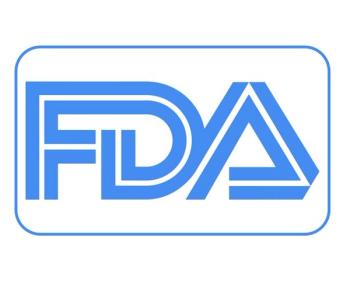
GLP-1/GIP Dual Agonist HRS9531 Shows Promising Phase 2 Data for Obesity Management
More than half of study participants receiving the dual incretin agonist had weight loss of 20% or greater, with no evidence of a plateau and only mild AEs.
Jiangsu Hengrui Pharmaceuticals and Kailera Therapeutics have announced compelling topline results from the phase 2 trial (HRS9531-203) evaluating the efficacy and safety of HRS9531, a novel dual
The multicenter randomized trial demonstrated that participants with overweight or obesity and without
HRS9531 exhibited a favorable safety profile, with most adverse events (AEs) being mild and consistent with other drugs in the GLP-1/GIP receptor agonist class. The most common AEs were gastrointestinal-related and occurred primarily during dose titration.
“These results solidify HRS9531 as a potential breakthrough in chronic weight management,” Ron Renaud, president and CEO of Kailera Therapeutics, said in the press statement. “The 8 mg dose has shown exceptional efficacy and safety, and we are building the infrastructure to advance this promising candidate into a global phase 3 program.”
Previous phase 2 data. The latest findings build on prior results from the HRS9531-201 phase 2 trial, presented in June 2024 at the American Diabetes Association (ADA) Scientific Sessions.2 Participants were randomly assigned to receive once-weekly subcutaneous injections of HRS9531 or a placebo injection across 4 dose cohorts (1.0 mg, 3.0 mg, 4.5 mg, and 6.0 mg) for 24 weeks. In this study, participants achieved a maximum placebo-adjusted mean weight loss of 16.7% (P <.001) at the 6-mg dose at 24 weeks. Importantly, both Phase 2 trials utilized a titration protocol that included 12 weeks at the target dose, underscoring the role of gradual dose escalation in optimizing outcomes.2
HRS9531-203. The HRS9531-203 trial, conducted in China, was a multicenter, randomized, double-blind, placebo-controlled phase 2 study. The study enrolled 61 adults, aged 18-65 years, with overweight or obesity (BMI 24–40 kg/m²) but without type 2 diabetes. Participants were randomized 4:1 to receive either HRS9531 or placebo, with a titration schedule leading to the 8-mg target dose over 24 weeks, followed by 12 weeks of maintenance. The primary endpoint was the percentage change in body weight from baseline at 36 weeks. Of the 61 participants, 49 received the investigational medication. The prospects for the dual incretin agonist seem favorable given the high proportion of participants who achieved clinically meaningful weight loss.
The dual GLP-1/GIP receptor agonist has shown efficacy across clinical trials that have enrolled and treated more than 650 participants to date. By targeting both GLP-1 and GIP receptors, HRS9531 leverages complementary pathways to regulate appetite and energy balance, making it a potentially powerful option for chronic weight management.
In addition to ongoing phase 3 trials for obesity and type 2 diabetes in China, Kailera Therapeutics is advancing HRS9531 globally under the name KAI-9531.
Hengrui and Kailera plan to present detailed phase 2 results at an upcoming scientific conference and proceed with global phase 3 studies.
References
1. Jiangsu Hengrui Pharmaceuticals and Kailera Therapeutics report positive topline data from 8 mg dose of phase 2 obesity trial of GLP-1/GIP receptor dual agonist HRS9531. News release. Kailera Therapeutics. January 13, 2024. Accessed January 14, 2025. https://www.kailera.com/press-release/jiangsu-hengrui-pharmaceuticals-and-kailera-therapeutics-report-positive-topline-data-from-8-mg-dose-of-phase-2-obesity-trial-of-glp-1-gip-receptor-dual-agonist-hrs9531/
2. Zhao L, Zhu D, Liu D, et al. Efficacy and safety of NRS9531, a novel dual GLP-1/GIP receptor agonist, in obese adults-a phase 2 trial. Diabetes 2024;73(Supplement_1):1861-LB. doi:10.2337/db24-1861-LB
Newsletter
Enhance your clinical practice with the Patient Care newsletter, offering the latest evidence-based guidelines, diagnostic insights, and treatment strategies for primary care physicians.

















































































































































































































































































